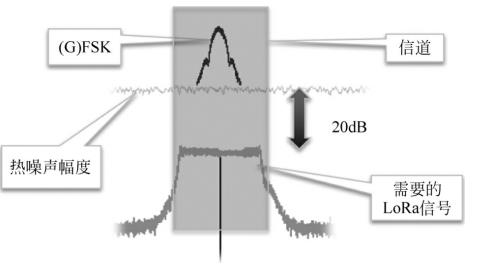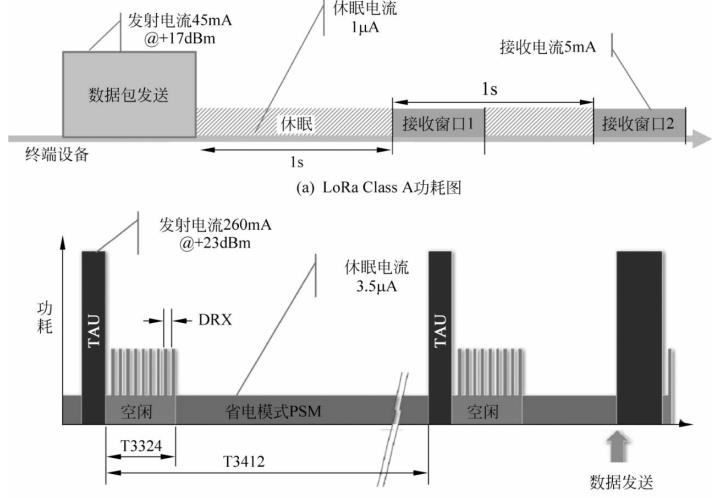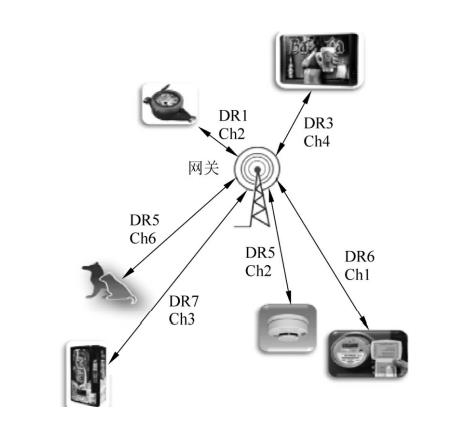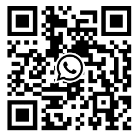Strong anti-interference ability
In addition to the sensitivity advantage, LoRa has a very important factor is its super anti-interference ability. LoRa has the limit anti-interference technology that can still communicate with 20dB below the noise, which is not available in the existing traditional communication technology.

As shown in Figure 1-23, LoRa can normally demodulate the signal by 20dB under the noise, while FSK theoretically requires 8dB above the noise to guarantee the demodulation. LoRa can continue to stabilize the communication, compared to the external electromagnetic signals, while the traditional wireless technology cannot communicate. Therefore, in some areas with serious channel interference, customers will choose LoRa technology as the core technology of stable communication.

Figure 1-23 Schematic representation of LoRa anti-interference
In addition, LoRa has a very good ability to respond with stronger sudden random interference. If faced with a strong interference source with burst length <LoRa or interference duty cycle <50%, LoRa can still stably demodulate and ensure that its sensitivity deterior<3dB.
The main reason why LoRa modulation has such a strong anti-interference ability is that Chirp debugging can gather the useful LoRa signals together under the noise during coherent demodulation, and the noise is still noise after coherent demodulation. Specific technical details will be detailed in Section 2.2.2.
The most important application of LoRa technology is the Internet of Things, and the Internet of Things has very high requirements for the service life of terminal devices. Under the traditional battery power supply, many applications have a working life requirement of 5 or even 10 years. The battery life directly affects the user experience, which requires LoRa technology to have ultra-low power consumption when applied. The realization of ultra-low power consumption is mainly determined by two aspects: on the one hand, the chip hardware should have low power consumption; on the other hand, the application protocol should also have low power consumption.
LoRa modulation is independent of narrowband, retransmission, and coding redundancy. Therefore, LoRa modulation is a very efficient modulation mode with very low operating current and its static current <1 μ A; the receiving current is less than 5 mA; the current is only 45 mA when the transmitting power is 17 dBm.

Figure 1-24 The PSM patterns of LoRaWANClassA versus NB-IoT
LoRaWAN Protocol is the standard protocol promoted by LoRa globally, which has the advantages of lightweight and intelligent. LoRaWAN Node and gateway communicate simple and less overhead; the network server can dynamically adjust the node rate and transmit power according to the signal quality to achieve power saving. Figures 1-24 show a schematic comparison of the sending of a packet of LoRaWAN with a packet in NB-IoT. As can be seen from the figure, the packet of LoRa is very simple, while NB-IoT needs to send and receive a large amount of handshake data due to its own operator characteristics and the streamlined protocol from LTE. Even with the same transmission power, the power consumption of the packet of NB-IoT is 3 times that of LoRa. In fact, the emission power consumption of NB-IoT is generally three times higher than that of LoRa.
In order to achieve power saving, the industry widely applies cycle listening (WakeonRadio, WOR): as shown in Figure 1-25, the chip periodically enters the receiving (RX) mode to detect whether there is a wake up signal (such as the leader), and it is in the dormant (Sleep) mode at other times. LoRaWAN The ClassB uses this way to achieve both low power consumption and real-time performance.

Figure 1-25
Disclaimer: The content and pictures of this article are written by the author and reprinted online. The views of the article only represent the author, the article and its pictures are only for learning use, if there is any content picture infringement or other problems, please contact this site for invasion delete.
Contact: Qui
Phone: 18146178586
Tel: 18146178586
Email: qui@zonewu.com
Add: 1501-3, Building F03, Phase III, Software Park, Jimei District, Xiamen City, Fujian Province, China
